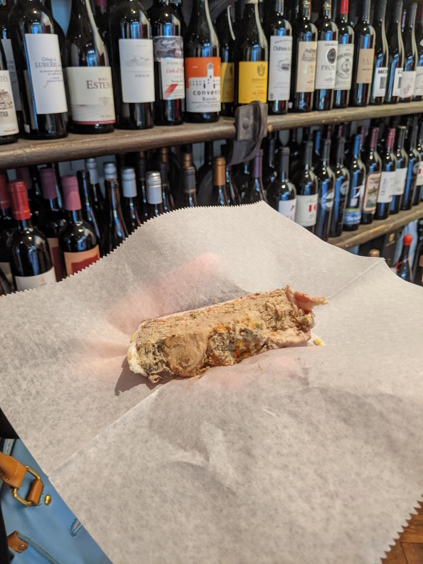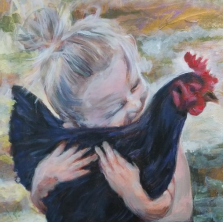This week we’re talking about the Secrets of Making Delicious Pâté. Among other things we do, there is a story behind this. We make it our business, along with welcoming people to our place, to seek out fun flavors, tastes and fragrances as part of what we call “human scale living.“

The Pâté Back Story
As a self-care event we ordered some Pâté at the Roe in Monroe before the holidays. This was for no other particular purpose than because we could. In the grand scheme of self care, it was not especially expensive, compared to a Lamborghini or diamonds. But the question came up, what would it take to make our own Pâté rather than buy it deliciously from the Roe?
How to Pronounce Pâté
Let’s clear this up first. It’s from someone called Julien Miguel.
Secrets of Making Delicious Pâté: What is Pâté?
Let’s clear this up too.
Pâté is a type of spread or appetizer made from a mixture of finely ground meat, such as liver, along with other ingredients such as spices, wine, and herbs. It can be smooth or chunky, served chilled or at room temperature, and is typically enjoyed on crackers, bread, or crostini. Pâté has a rich and savory flavor, and is a staple of French cuisine.
In other words, works well with charcuterie, and has a nice rich flavor that makes you happy.
History of Pâté
Well, according to sources, this stuff originated in Medieval France, and there are variations of it throughout Europe. Does the fact that this is European make us snooty for wanting to try it? Not necessarily, but we are constantly looking for ways to upgrade over the more common North American uses for liver, namely “chopped liver” and “little Friskies.”
The idea of eating “offal” as peasant food is interesting to us, as is that fact that the same stuff can be upgraded to delicacy with a little work.
Cultural Reference to Pâté
Ah, this. In Episode 5 of “Fawlty Towers.” Basil hatches the idea of “Gourmet Night,” in order to up-class his humble B&B. The episode is full of comedic failure. The two attempted menu items were Pâté and Lamb. Does this mean we are trying to up-class the place? Nah, in this case we’re doing it because we liked Pâté.
We also like lamb. but in a different way.
Secrets of Making Delicious Pâté
We started with the delicious-looking recipe in this article, but ended up changing everything except the red onions.
We started out at the Farmview Market sourcing organic, culturally sensitively raised beef liver. After seeing the price we opted for chicken liver at Ingles, which seemed more peasant-friendly.
The list of ingredients we eventually ended up with is as follows:
| Ingredient | Qty | Comments |
| Chicken Liver | 1 1/4 lb. | Regular industrial chicken livers from Ingles |
| Red Onion | 1 | Chopped up finer than “diced.” |
| Portobello Mushrooms | 3 cups | cut up finer than “diced” as well. We got lucky on this, there were experienced Portobello mushrooms being discounted to get them to move into Pate. |
| Capers | A few | Because they were there. Could have easily omitted and replaced with little chunks of something else. |
| Muscadine Wine | 1/4 cup | This was home bottled from an orphan batch that someone gave us because they didn’t know how to care for or bottle wine. Not everything here has a story, but a lot of things do. |
| Heavy Whipping Cream | 1/2 cup | This was probably the most expensive ingredient. There were plenty of leftovers. We were actually going for making this “lactose intolerant friendly” and if we were to do it over, we’d have used almond milk or something similar instead. |
| Garlic | 1-2 cloves | Regular kitchen item around here |
| Bacon Grease | 3 tablespoons | Bacon grease is also a regular kitchen item, and in this case was used instead of butter. |
| Misc. Spices | TBD | This is a little salt, a little pepper, and some of the secret spice we use in everything else around here. By the way, we went outside and got some wild onion as a garnish. We would normally also have used rosemary from the yard, but in this case it wasn’t happening because it is dried out right now. |
Cooking Techniques for Pâté
The chicken livers were trimmed, removing that little membrane that holds the whole thing together. The dry ingredients were chopped up, and the whole thing was sautéed in a normal sized skillet. We added the wine, spices, and enough bacon grease to make the whole thing nice and orderly.
From what we gather from research, you don’t actually have to stick with liver. We could have used liver, and/or blended it with other regular meats.
In the recipe below, Julia Child used lamb and pork, and baked hers using a bed of pork fat. We could have done something like that but we didn’t feel like baking it, and are not intimate enough with the butchers in our life to ask him for a layer of fat like that.
Another common method is to use strips of bacon, or some other crust material as the outer coating, which is all the more delightful.
For the purposes of this, since we were keeping our complexity low, we stuck with the cold version, using no crust material.
Chilling Out
Once the livers were browned, but not “too browned,” we processed the whole thing using one of those handheld food processors. We suppose that there are a variety of tools that would have done the same job in this case.
The whipping cream was added at this stage, and when uniformly smooth, the whole thing was dropped into a little glass serving dish which we had on hand.
There is such a thing as “Pâté de Campagne” that has chunks of flavorful ingredients, including nuts, pieces of cubed ham, and any of a number of other chopped meats for texture. These could have been added at this point.
The traditional method is to use a terrine (earthenware dish with a lid) and throw the whole thing in the oven, had there been any raw ingredients.
The reality of what we did was garnish the top with a few mushrooms and wild onions, and put it into the fridge for about an hour. We used the hour usefully, as we sometimes do, by going uptown. We’ll do a blog on that at some point in the near future.
Serving Method for Pâté
We had some leftover chaffles from something else, and this, with a spread of Pâté made a delightful midday snack.
We are not big into the crackers at the moment, but this would be a nice item for charcuterie, and also, served as an appetizer. We’re likely to attempt hummus at some point in the near future, and this Pâté would be good in exactly that same situation as a dip or garnish.
This stuff will keep for a couple of days in the fridge but will also freeze and be served later if needed.
Discover the Secrets of Making Delicious Pâté
So would we do this over again? Yes, we believe we would. We declared this “tres bien” and would not be afraid to repeat it, and/or serve it as a welcoming snack for guests.
Ultimately, the secret of making delicious Pâté is not to be intimidated by the Frenchness of it.
Pâté Self-Care Event?
We have to say that in our case, this whole place is about self-care. If you wanted to come out to the Firefly, pretty bed and breakfast near Madison GA, and take a “Pâté Making Class” and do a few variations of this and afterward have some adult beverages and speak French, we could accommodate that too.
For that matter, if you and a lot of friends would like to do this, so much the better.
Pâté variations as a party food has its merits, as does various types of self-care.
Links and References
Julia Child
![]()
